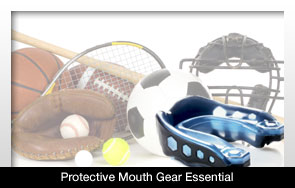 |
Many children that don’t wear protective mouthguards while playing sports should be doing so, according to a survey conducted by Delta Dental Plans Association. These findings indicate that children aren’t listening to their dentists.
Delta Dental recently did a wide-ranging survey regarding the oral health of American children.
Aside from the obvious protection provided to the teeth, mouthguards absorb shock and soften a blow that could have resulted in a concussion. The US Centers for Disease Control and Prevention calculated that around 300,000 people suffer sports-related concussions every year—children and teenagers are at the highest risk.
About seven of 10 parents reported that their child doesn’t wear a mouthguard for sports like baseball, basketball, soccer or softball. Parents of athletes in these sports are less fearful of injury than if their child played hockey, lacrosse or football, for example. Studies, however, indicate that basketball players are 15 times more likely to experience an orofacial injury than a football player is.
Since mouthguards became mandatory for football players, mouth injuries have declined significantly. Still, only about 70 percent of parents claimed their child always wears a mouthguard during practices and games. Around 44 percent of hockey parents said their child wore a mouthguard for games and practices.
The three kinds of mouthguards available include: (1) stock mouthguards, which are the least expensive; (2) mouth-formed mouthguards, which can be purchased at sporting goods stores and can conform to the child’s mouth; and (3) custom-made mouthguards, the most expensive choice, which are made from a dentist and are molded to the child’s teeth.
Regardless of how much money a parent wants to pour into mouth protection, any mouthguard is better than nothing.

|



